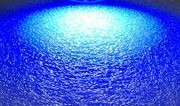A government-supported consortium named “Advanced UV for LIfe” is actively pushing the development of UV LED for various applications. Next to Osram Opto Semiconductors, four more partner institutes and companies have joined the alliance. Prototypes of high power UV LEDs based on aluminum gallium nitride (AlGaN) are expected to be presendted by the year 2020.
As the consortium released on its website, the two main issues are the replacement of currently dominant mercury vapor lamps and the development of novel applications for UV LED. Promising areas of applications are the fields medicine, environment & life sciences, disinfection and production.
The consortium furthermore stated that UV radiation is more energetic than visible light. Its energy is sufficient to destroy chemical bonds or to generate reactants and to enable them to enter into new bonds. However, different application areas have different requirements since not only the wavelength of the radiation is crucial, but also irradiance depending on the application.
According to “Advanced UV for Life”, the use of chemicals can be completely dispensed through the use of UV irradiation which leaves no smell, nor taste, color or pH of the irradiated material and leaves no material addition. Therefore UV is very suitable for the purification of drinking water, sterilizing food and drugs, the provision of clean air as well as in the field of hygiene, e.g. in hospitals.
Further application areas include the analysis of solids, liquids and gases. Narrowband UV emitters are suited for the selective quantitative determination of specific ingredients, such as polluting gases in the atmosphere. UV can also be used for the identification and quantitative analysis of certain substances or products in in safety engineering and the chemical and medical analysis.
The consortium finally pointed out, that wavelength and intensity of UV radiation sources can be optimized for any application in question so that harmful side effects are ruled out or in comparison to currently available UV-sources significantly reduced. Therefore, new fields applications can be opened up in medical use such as diagnosis, therapy monitoring and patient monitoring.sm.


